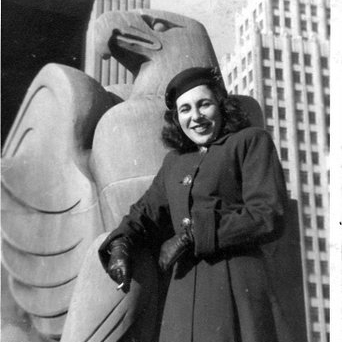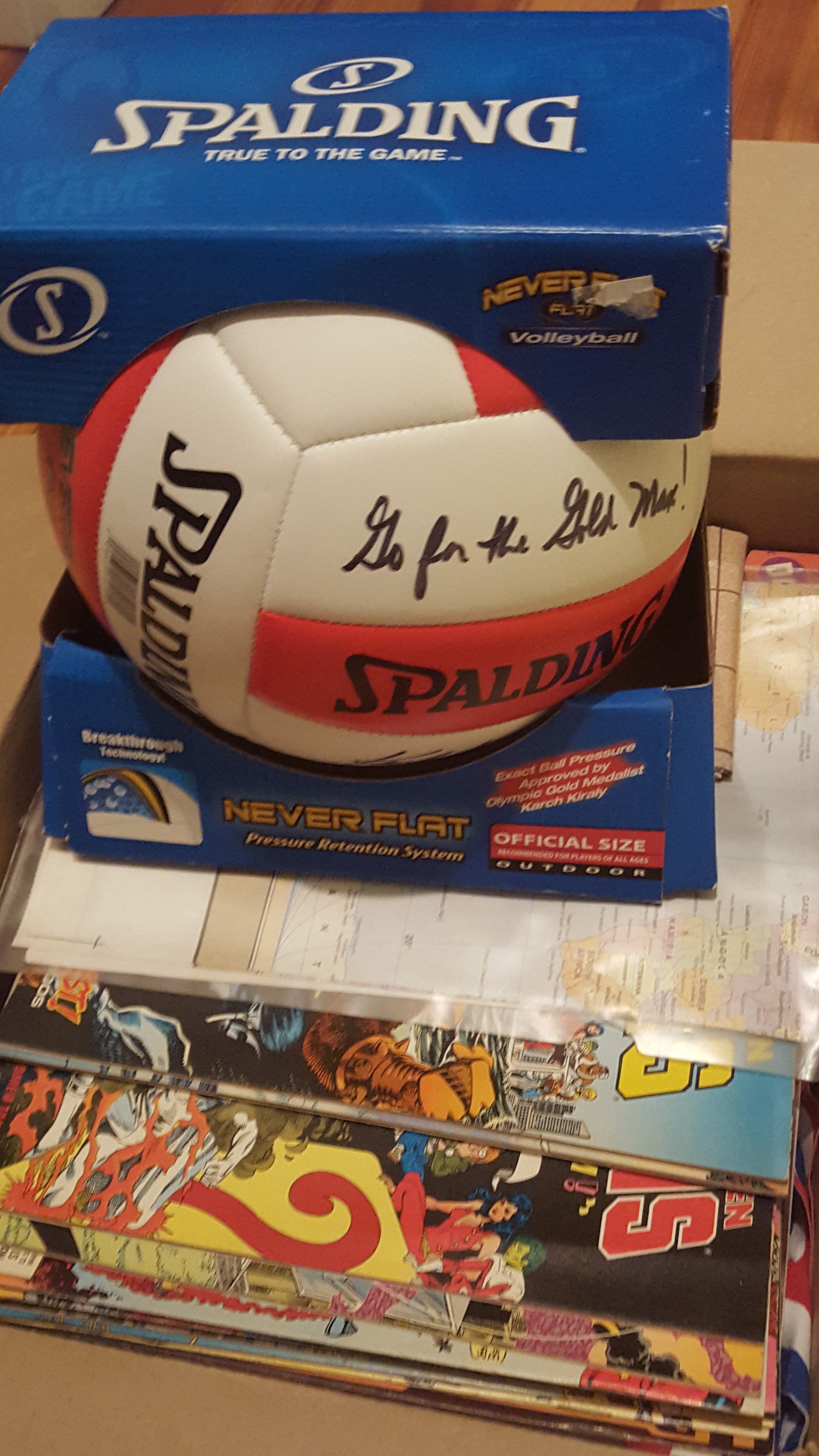The Song is Ended, the Melody Lingers On
By Susan Caba
The Resale Evangelista
“I know the timing of this statement will seem a bit odd, my friend. But we so should have slept together that night we were listening to Jazz at your place! Two passionate people. It would have been combustible! I so should have made a move.”
His message came out of the blue.
We’d been colleagues decades earlier, working on an afternoon newspaper. We sometimes ended the workday at a nearby hotel nightclub, listening to singer Irene Myles perform her repertoire of blues and jazz. My favorite was her rakish version of “The Mean and Evil Blues.”
“I’m so mean and evil
Even rain don’t fall on me…”
One night he brought albums (yes, actual vinyl albums) to my apartment. He was schooling me in the jazz classics. If it was a date, I had no idea. I was caught up in the rhythms of jazz.
 Cornell was slender and probably the closest thing Des Moines had to “cool.” I was—well, I’ve never been good at figuring who or what I am. I’ve come to realize I was slender, too, but curvy. My mother said, on the occasion of her 50th high school reunion, “If only we’d known then how hot we were.” I guess I was hot to Cornell’s cool.
Cornell was slender and probably the closest thing Des Moines had to “cool.” I was—well, I’ve never been good at figuring who or what I am. I’ve come to realize I was slender, too, but curvy. My mother said, on the occasion of her 50th high school reunion, “If only we’d known then how hot we were.” I guess I was hot to Cornell’s cool.
I covered City Hall. Cornell wrote about popular culture. His nightclub reviews—including the dank and dirty—tended toward hilarious.
The afternoon newspaper closed. I moved to the morning paper, and eventually to Philadelphia. Cornell went to work for a wire service, had a weekly comedy gig on the radio—and then discovered his true avocation: political operative. He moved to California in 2000 at the request of Al Gore’s campaign, and was active in Kamala Harris’ first election as San Francisco’s district attorney.
Scrolling through my messages and Facebook timeline, I see we reconnected in 2011. I was in St. Louis, and so was Cornell’s mother. She grew up there, got married there, had Cornell, then the family moved to the south side of Chicago when he was five. Cornell put down deep roots in Chicago, though he still spent summers in St. Louis.
“I hope you’re still listening to great jazz!!!,” he wrote, in a message otherwise devoted to finding a dentist for his mother. She had returned to St. Louis to be near her sisters. He called the three of them “The Moms.”
“I still listen to great jazz. But my all-time favorite is the woman who sang in the club in Des Moines–and I wish I had a recording of “I’m so bad” that she sang,” I responded.
Flirting about that “jazz night” wound through our messages the way the languid sound of a clarinet insinuates its way into a melody. Like the best jazz lyrics, his sporadic messages were tantalizingly explicit, but teasingly elusive.
You know, when we were sitting in your apartment
listening to jazz albums, we really should have…..
Never too late!!!
Then we’d send laughing emojis and drop the subject. This time, we improvised a flirty confection that lifted my spirits during a stressful time. I reread it several times over the next day or two, like a woman tracing her lover’s face in a photograph.
♦ ♦ ♦ ♦ ♦
I know the timing of this statement will seem a bit odd, my friend. But we so should have slept together that night we were listening to Jazz at your place! LOL two passionate people. It would have been combustible! I so should have made a move.
Well, wish you had!
You had the hots for my friend and former roommate, Mitch. Still…
Sorry for that brief answer, I was busy slamming a Trump troll with the facts of how much The Cheeto in Chief spent on golf vs Obama.
Now, back to business. I don’t even remember Mitch, let alone having a crush on him–though I remember that he died and you said I went out with him once. I was thinking today that the evenings we spent at the Savery listening to music were some of the best I’ve ever spent. And I think of you often when I appreciate a piece of music, esp jazz!
I so wanted you that night and beyond. A smart, hot woman who liked jazz… it didn’t get any better than that! Pretty sure I kissed you that night and we left it at that.
Oh, no, I think I would remember a kiss!
You know, I was pretty oblivious in those days of what men thought of me or about me.
There’s no question that was a sensual night
Obviously, it’s been impressed in my memory all these years.
That’s funny because one day a few of us voted you the hottest body in the office! Pretty sure it was Kolarik, Perkins and me…
Really? Dammit! Somebody should have told me!
And I haven’t forgotten that evening either.
I can even name the albums we listened to.
Yes? One was Kind of Blue, wasn’t it?
I had those albums for years…I may still have them somewhere!
Very good! The other was the Heath Brothers Live and we listened to some Sarah Vaughan. Good Lord that was like 40 years ago. We still have time.
Sarah Vaughn, you know my favorites are still female singers. One of the things I did in Philadelphia to celebrate the end of my 90-day tryout period was to take myself to see Ella Fitzgerald. And there is a woman I saw at a nightclub in Manhattan (her name will come to me). That was a magical night.
And now, here we are both in California and separated by the coronavirus!
I do remember you told me the 10 essential albums I had to have.
I was a huge Dinah Washington fan. She was from Chicago. But New York has some great singers too… Betty Carter, Alberta Hunter, Ernestine Anderson, Helen Humes… too many to name.
Betty Carter! That’s who I went to see with a friend who was from New York. We saw her second set at whatever was the famous nightclub she sang at. One of my favorite albums ever is “I can’t help it.” I love, love, love that song.
Betty played a voice teacher on a great episode of The Cosby Show. Such a distinctive voice.
I’m so loving our conversation.
Let’s figure out a way to hang out one of these days when it’s safe. Seriously. I still think about that night.
I would love that.
I think about that night, too.
And you really did bring music into my life.
Thanks for the memories—
and the glimpse of a hoped-for future hangout! Stay well!
No, thank you. Speaking of Dinah Washington, here is one of the most sexual jazz songs ever… Got her kicked off of a couple of stations. Talk to you soon.
Written By Dinah Washington in 1948 LYRICS: I’ve got a dentist who’s over seven feet tall Yes I’ve got a dentist who’s over seven feet tall Long John they ca… youtube.com
Will listen to it with you in mind!
Remember you said that.
I will.
OMG! I just listened–and laughed out loud. No wonder it was banned!
Remind me to tell you, sometime, about a dentist who had me put on head phones and pick out music to have my teeth cleaned, then suggested I should have laughing gas. “But I’m just having my teeth cleaned,” I said, nonetheless agreeing (I had never had gas anaesthesia before!). Despite having just said I wasn’t aware of what men were thinking at that time, I did manage, through the drug fog and throbbing music, to realize I needed to grab ahold of my fleeting wits!
Looking forward to meeting sometime in the future—
and letting go of my fleeting wits!
Is it bad that I’m lying here thinking about drilling you? LOL
No, but I think we should pick a different set for the background music, cuz I don’t think it would be good for me to bust out laughing at the lyrics!
This is her signature tune…
Dinah Washington What Difference A Day Makes from Give Me Back My Tears youtube.com
Don’t tempt me to encourage you—
I can slip into provocation all too easily.
I’m already encouraged! All I had to do was think about our Jazz night. Provocation I can handle.

Blues and jazz singer Dinah Washington, 1924-1963, Queen of the Blues
Handle?
Absolutely.
Softly, like velvet?
I will be really glad when this lockdown ends. In the meantime I’m glad I have certain memories to call upon. That’s probably why I’m smiling right now.
Those eyes. Jazz. Perfect.
Here’s a soundtrack to put you to sleep–or not:
https://www.youtube.com/watch?v=emkqc3PIw8E&list=PL19687A45D3E23BA4&index=3
That will definitely be our background music when we finally…
Damn I want you right now, Caba.
I’m smiling, too.
This is a good thing.
‘night, Cornell. Sleep loose…
Needless to say, I’m glad you reached out..
Good night my friend. Sleep well.
Until…
Yes
♦ ♦ ♦ ♦ ♦
“We still have time,” he wrote.
Except we didn’t. A few days after our exchange, Cornell — fit and apparently healthy — suffered a cluster of strokes. Three days later, he died.
I was sad, but I was mourning the young man I knew 40 years earlier, when we worked together and shared that “jazz night.” I didn’t really come to know the man Cornell had become until his memorial service. And then, I felt an even deeper regret at his passing.
He was a man with three passions, said a friend at the memorial: His fraternity, in which he had just celebrated 44 years; politics, and jazz. “Don’t forget women,” someone called out and everyone laughed. “Oh yes, Cornell loved women,” said a voice from the crowd.

Cornell, 1956-2020
He was, in the words of another friend, “a charming, handsome rascal who loved to raise hell.” He was 13 years in recovery from a drug addiction, and kept his annual tokens from Narcotics Anonymous on his dresser. To his Alpha Phi Alpha fraternity brothers, he was “the Golden Goody,” though they wouldn’t say how he earned the nickname.
Maybe it had something to do, in part, with the bronze-y undertones of his complexion, or his eyes that shaded from brown to hazel. He and one of his cousins had a running joke about which of them was the best-looking in their family. Cornell had a lean, unlined face, nicely shaped lips between faint dimples, dark hair cropped close and—most importantly—a warm gaze.
He was usually dressed in workout clothes—his landlady said he had “a zillion tee-shirts” from his gym, Boss Barbell—and an Alpha Phi Alpha baseball cap worn backwards. But he cleaned up nicely, wearing a dark, well-tailored suit.
His story was not what I expected.
He seemed to work the gig economy when he wasn’t involved in a campaign. He picked up jobs at the Mountain View Day Worker Center, managed a Kiwanis Christmas tree lot every Christmas, worked on a crew staging furniture, and consulted for politicians and political causes.
Lately, he’d was actively pushing for Kamala Harris to be Joe Biden’s vice presidential pick. Asked if he might have a job in a Biden administration, he immediately quipped “Minister of Funk.”
Cornell was defined by his friendships, not his jobs. Several dozen people attended his “social distancing” memorial, standing six feet apart on an asphalt parking lot for more than an hour to share memories. Almost every one who marked his passing on his Facebook page began their posts with “I first met Cornell…” The times and places were frequently decades in the past, though their last contacts were often in the previous weeks.
He was an only child, survived by two elderly aunts and a pack of cousins. He apparently never married. Maybe that’s why he forged such long and deep connections.
Which is not to say Cornell didn’t have his struggles, or moments of despair. His landlady found a little notebook in his room. Written in the corner of one page, she said, was this: “Thank you to all the people who said “no” to me. It’s because of you that I did it myself.”
I can’t pretend to have known him well. But he touched me with his grace and energy. And I’ll always have jazz.
–30–
The Resale Evangelista is simplifying, clarifying and trying to live a more artful life. The most artful lives include close connections, past and present. Cornell Fowler was a master of making and maintaining connections of all kinds. The world is less full without him.
The Song is Ended, from the 1961 album, Unforgettable. Kind of Blue, 1959 studio album by Miles Davis.






 Cornell was slender and probably the closest thing Des Moines had to “cool.” I was—well, I’ve never been good at figuring who or what I am. I’ve come to realize I was slender, too, but curvy. My mother said, on the occasion of her 50th high school reunion, “If only we’d known then how hot we were.” I guess I was hot to Cornell’s cool.
Cornell was slender and probably the closest thing Des Moines had to “cool.” I was—well, I’ve never been good at figuring who or what I am. I’ve come to realize I was slender, too, but curvy. My mother said, on the occasion of her 50th high school reunion, “If only we’d known then how hot we were.” I guess I was hot to Cornell’s cool.









 Catherine never got around to following their suggestion. But her daughter,
Catherine never got around to following their suggestion. But her daughter, When Gib retired, Catherine could finally paint full-time. And, during the last few years of Gib’s life, when he was ill and housebound, she made her memory paintings to pass the time and cheer him up. In doing so, she created vivid images and stories that made the past come alive—and seem magical.
When Gib retired, Catherine could finally paint full-time. And, during the last few years of Gib’s life, when he was ill and housebound, she made her memory paintings to pass the time and cheer him up. In doing so, she created vivid images and stories that made the past come alive—and seem magical. 










 Earth Day Celebration
Earth Day Celebration
